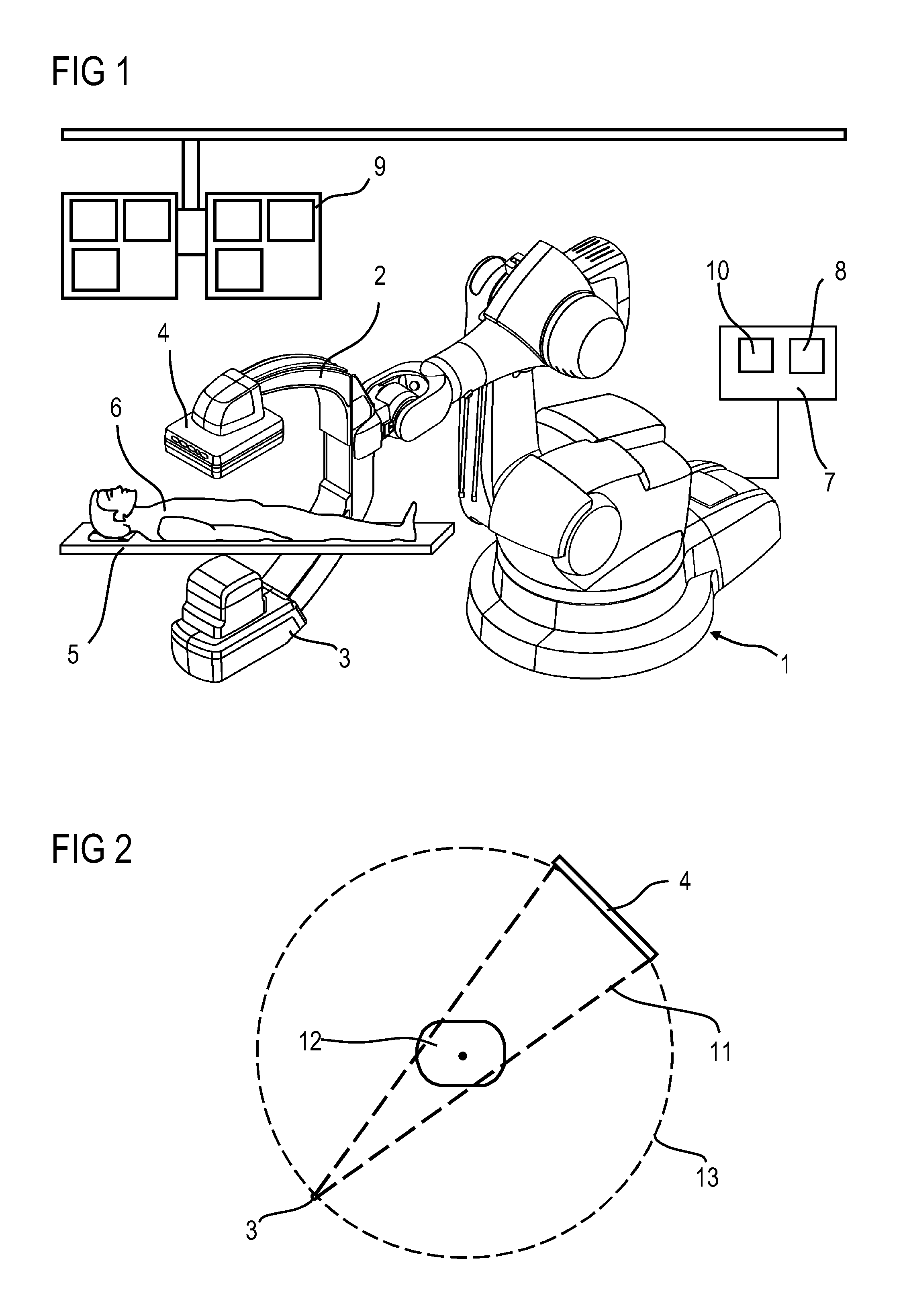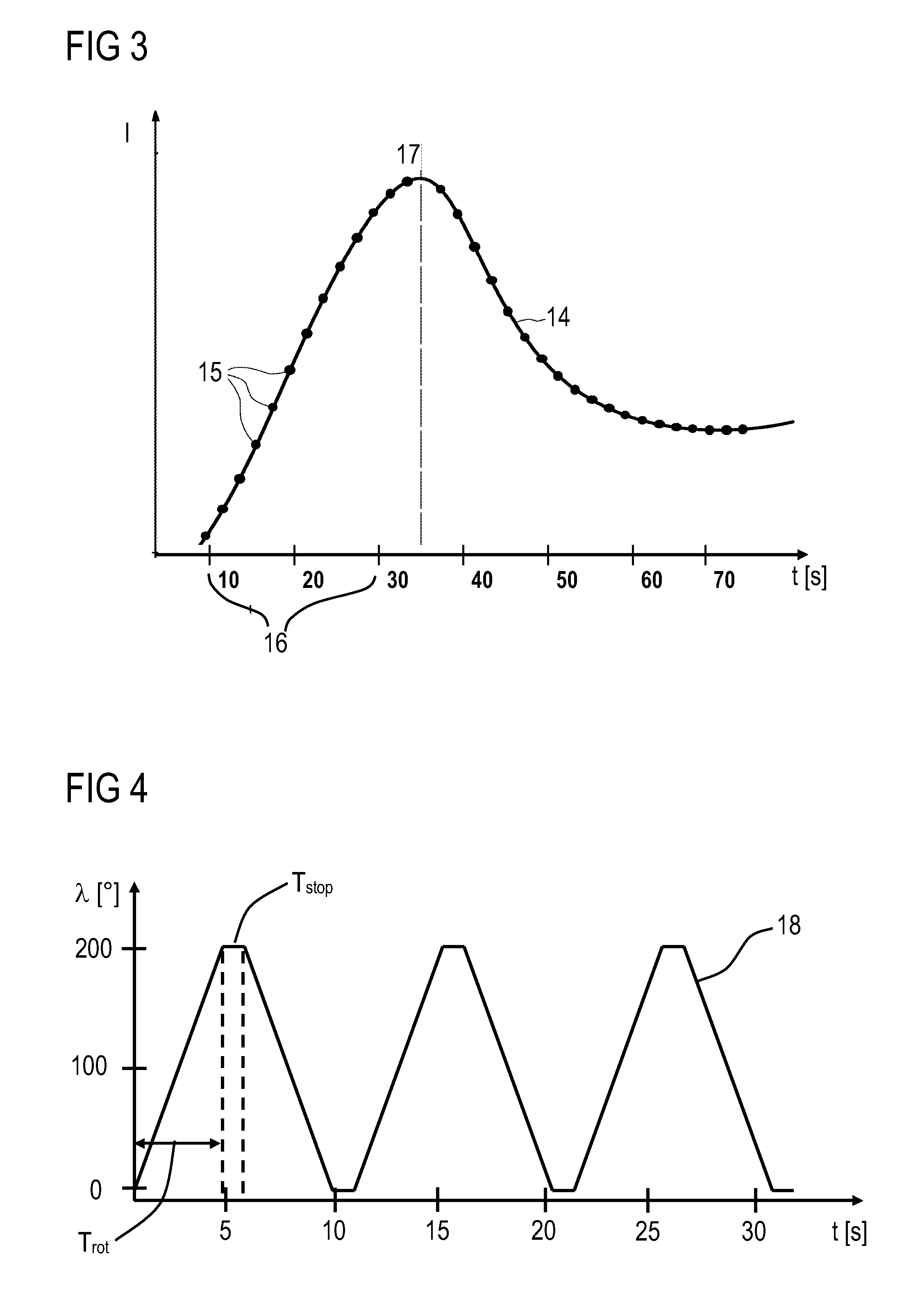Angiographic examination method
a technology of angiography and angiography, which is applied in the field of angiographic examination methods, can solve the problems of low contrast attenuation values in the brain tissue, sensitivity to noise, and inability to fast acquire protocols in the vast majority of interventional workplaces, so as to reduce the noise level and reasonable computing time
- Summary
- Abstract
- Description
- Claims
- Application Information
AI Technical Summary
Benefits of technology
Problems solved by technology
Method used
Image
Examples
Embodiment Construction
[0043]An acquisition protocol 18 for perfusion by means of a C-arm is described in FIG. 4, which can serve for data acquisition. Since the known C-arm systems enable continuous rotation in only one direction, the C-arm is rotated bidirectionally forwards and backwards. The first C-arm rotation in a forward and backward direction acquires basis projections with the static, anatomical structures—a so-called mask. During each rotation, Nproj=248 projections are acquired along an angular region of approx. 200°. After a contrast agent has been injected, the C-arm is rotated approx. Nrot=7 times bidirectionally, as is shown in FIG. 4. Each rotation lasts Trot=4.3 seconds, with a pause of Tstop=1.2 seconds between two successive rotations.
[0044]Then a direct reconstruction of the rotations would allow a temporal sampling of TACs with a duration of Ts=Trot+Tstop=5.5 seconds over a total scanning time of Tscan=Nrot*Trot+(Nrot−1)*Tstop=37.3 seconds. The basis projections are subtracted from t...
PUM
 Login to View More
Login to View More Abstract
Description
Claims
Application Information
 Login to View More
Login to View More - R&D
- Intellectual Property
- Life Sciences
- Materials
- Tech Scout
- Unparalleled Data Quality
- Higher Quality Content
- 60% Fewer Hallucinations
Browse by: Latest US Patents, China's latest patents, Technical Efficacy Thesaurus, Application Domain, Technology Topic, Popular Technical Reports.
© 2025 PatSnap. All rights reserved.Legal|Privacy policy|Modern Slavery Act Transparency Statement|Sitemap|About US| Contact US: help@patsnap.com



